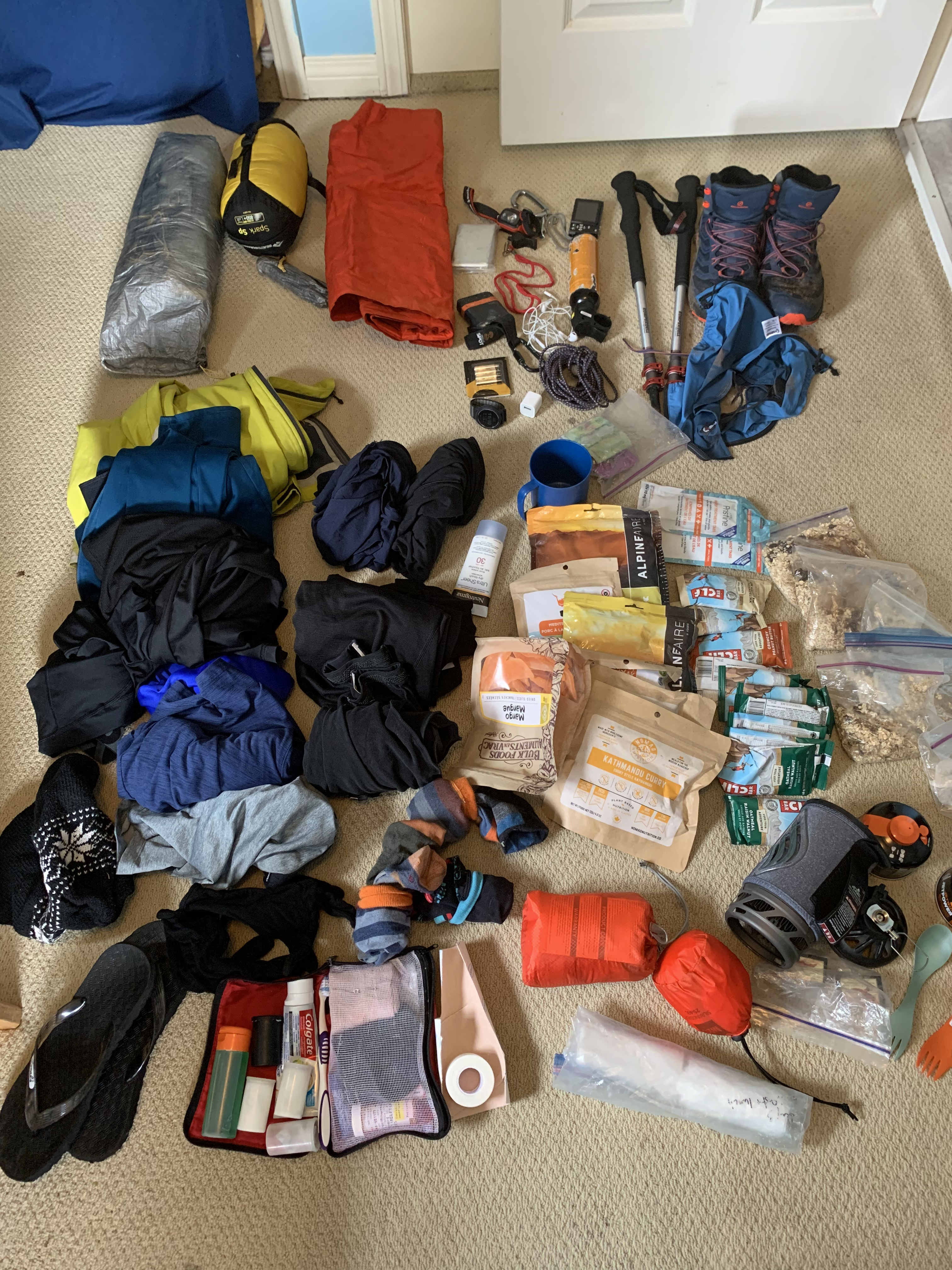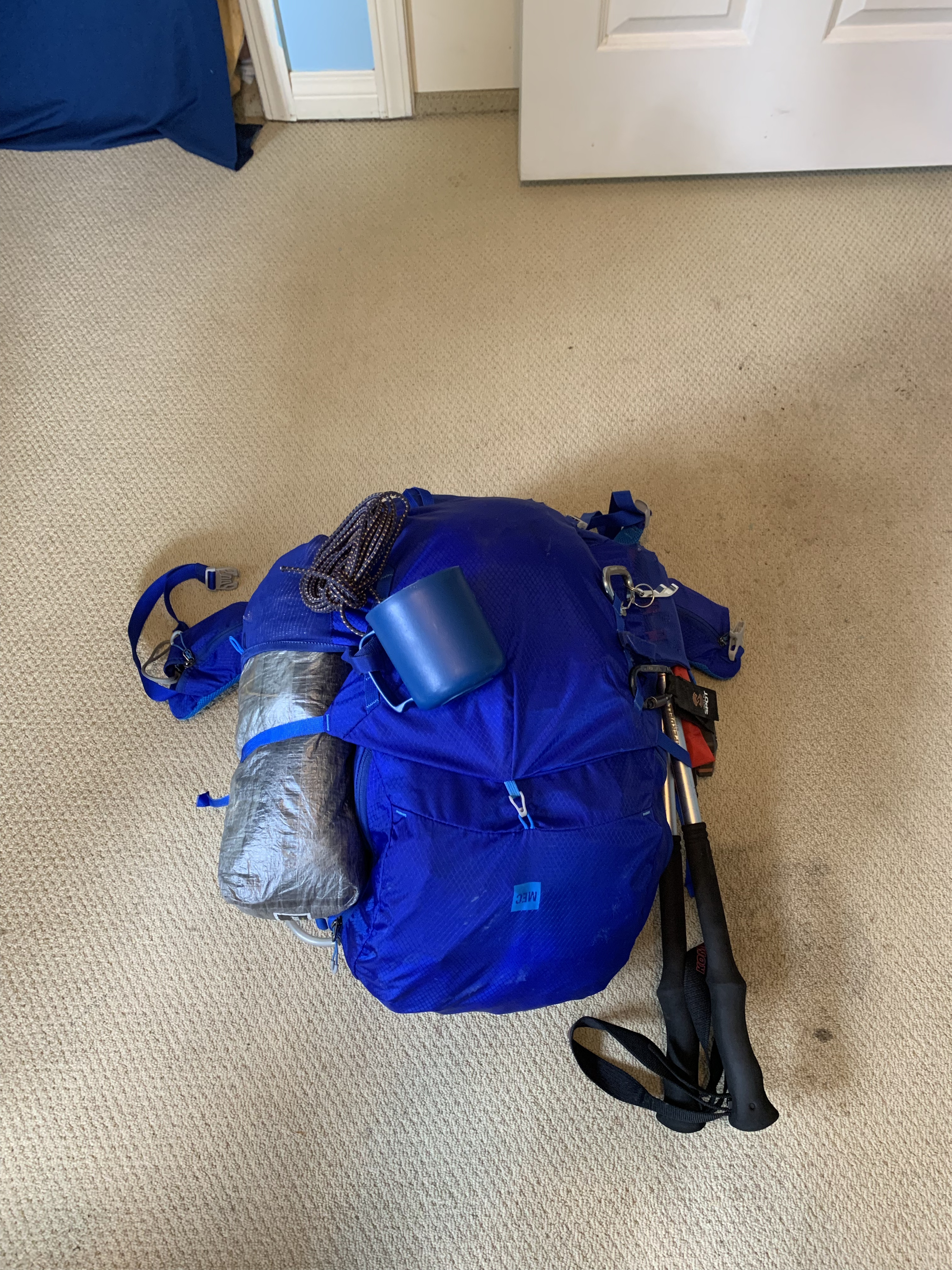Packing Light
For my upcoming West Coast trail I was determined to pack light. The difference between a 11.3kg (25lb) and 22.6kg (50lb) backpack on your ability to hike is huge. I really felt that difference on the Stein Valley where I had a 19.9kg backpack.
The West Coast trail is 75km, takes the average person 6-8 days and involves lots of rough terrain. The main causes of emergency evacuation from the West Coast Trail or evacuation and injuries due to slips and falls. The majority of the latter come from people with overloaded packs and tired people. A lighter pack reduces fatigue and reduces the chance of injury.
For the Stein Valley my 65L pack weighed 19.9kg (44lbs).
For the West Coast Trail my 40L pack weighed 11.8kg (26lbs).
Here’s what was in it:

Here’s what it looked like packed:

That’s food and gear for 6 nights.
Note: as I hiked I moved more stuff inside and moved the tent onto the bottom of the pack to reduce snags and catching things on the side. It also made my backpack cover fit better.
Big Wins
Check out the gear page for details.
The 40L backpack is lighter than my 65L one. That’s partly because its smaller, but also because its a lot newer. The 65L one is over 20 years old still good but things have advanced a long way since then. The 40L backpack is 2.1kg lighter!
My tent is a bit of a pain to put up and sleep in, suffering from wind, condensation and camping on sand (all of which happen on the West Coast Trail). However it weighs 517g, including pegs. You don’t need to carry poles because you just hiking poles. Win.
My sleeping bag is 530g and packs down super small. Add in a base layer or thermal set for sleeping which weighed 315g.
Clothes I ended up with the following:
- shorts and t-shirt for hot weather
- pants and top for the normal west coast weather
- pants and top for cold or very wet weather
- gloves and toque
- 3 pairs of socks
- a thin but warm top (329g)
- a waterproof jacket (410g)
This means I was re-wearing clothes, but able to layer together up to 4 or 5 layers together if I really needed it. No need to carry a puffy down jacket, just use smart layers to build for the weather.
Food is all dehydrated:
- oats for breakfast
- cliff bars and dried mango for snacks
- dehydrated food for dinner in bags
- herbal tea bags
Cooking is done using a Jetboil Flash.
My one luxury was a hammock (at 200g) for when I just wanted to relax.
There’s a bunch of other miscellaneous bits of pieces, dry bags, satellite tracker, toilet roll and so on. But those things above are the biggest sources of space and weight.
The key here for me was to be ruthless, I know all the weights of these because I measured everything and put it on a spreadsheet. The difference between the yellow gore-tex Sugoi jacket and a blue MEC gore-tex jacket was 200g, something I hadn’t really thought about until I weighed them.
Keep weighing things and be ruthless about what you do and don’t need. You have to be ready for any weather and any situation, you have to ensure you don’t get cold and face hypothermia - but you don’t have to take everything.
I hiked the West Coast Trail with people carrying 65lb backpacks and goggled at the stuff they brought. I think they probably felt the same too.
Some examples that made me wonder:
- A tent that required 18 pegs to be set up. 18!
- A person carrying cucumber as food. Cucumber is 96% water.
- A person carrying cans of tuna. Those cans contain water or oil and then you have to pack out the cans.
- A person who brought in 3 saws to the West Coast Trail so they could cut up firewood. …and so on.
But respect to the people who don’t bother with tents at all, they are hardcore.